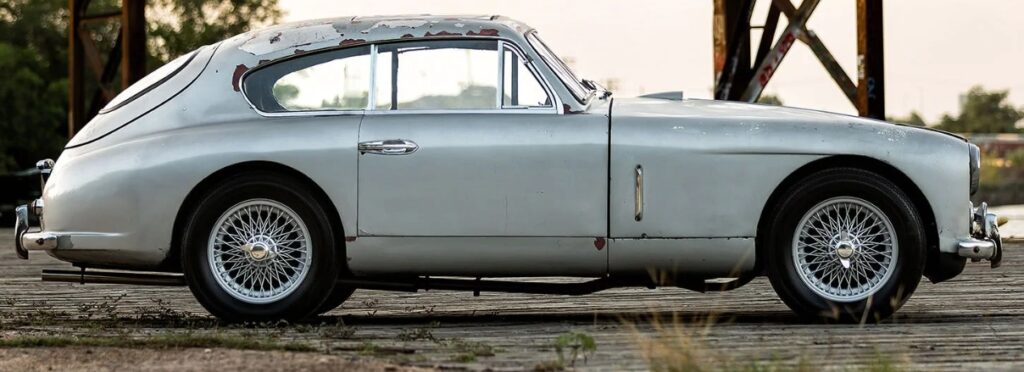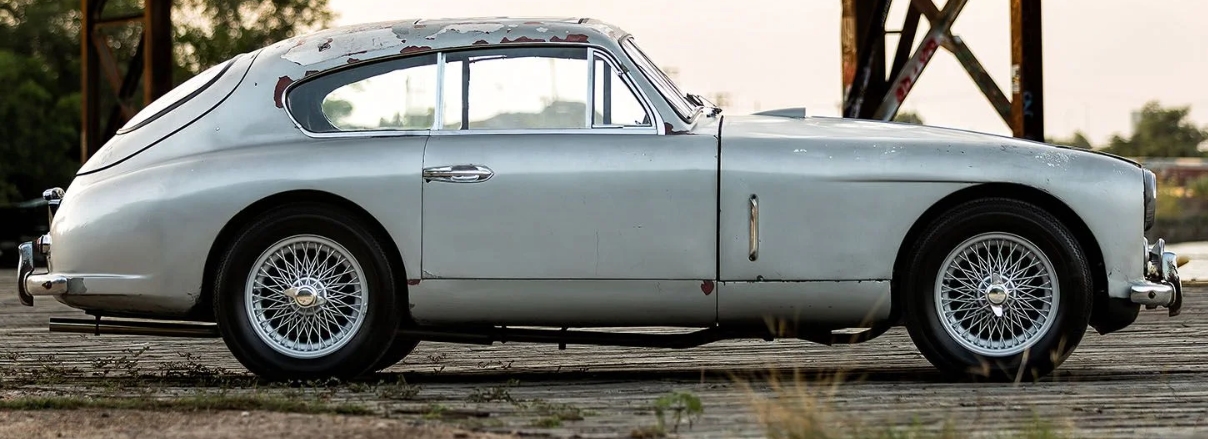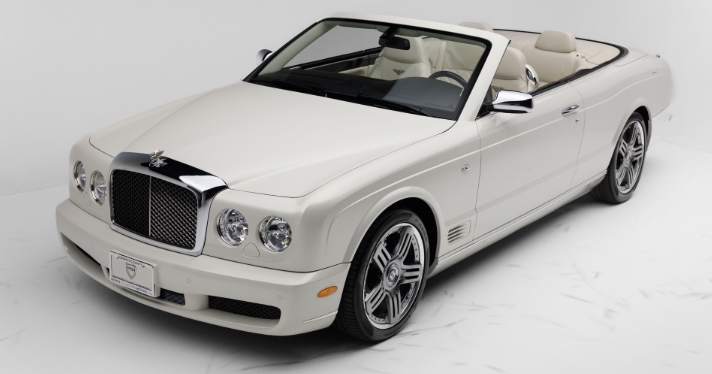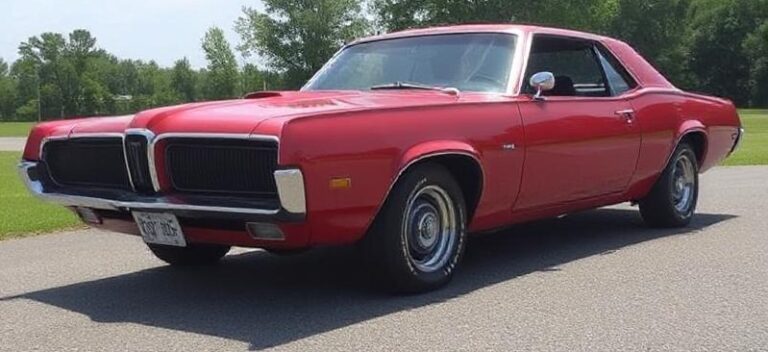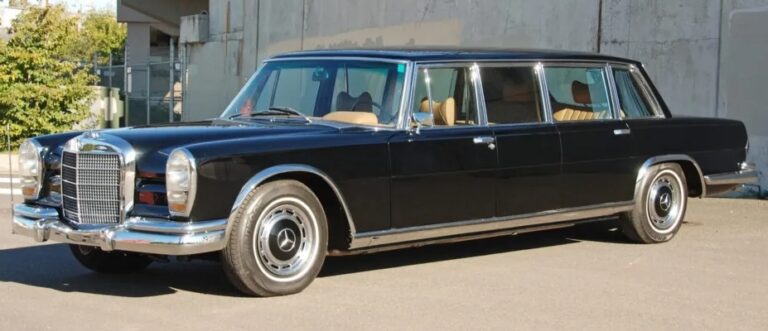The Evolution of the Aston Martin DB Series: DB2, DB4, and DB6
Aston Martin has long been synonymous with British luxury, engineering excellence, and timeless design. Among its most iconic models are the DB series, which includes the DB2, DB4, and DB6. Spanning from the early 1950s through the mid-1960s, these cars represent the evolution of Aston Martin’s grand tourers and sports cars, highlighting technological advancements, design philosophies, and performance improvements. This article offers a detailed chronological account of these models, their production years, and the various trim levels and variants offered throughout their respective histories.
The Aston Martin DB2 (1950–1957)
Introduction and Development
The Aston Martin DB2 marked Aston Martin’s transition from pre-war sports cars to a more refined grand tourer with a focus on performance and luxury. It was introduced in 1950 as a replacement for the earlier 2-Litre Sports models and was designed by Carrozzeria Touring in Italy, featuring a lightweight aluminum body.
Production Timeline
- Production Years: 1950–1957
- Total Units Produced: Approximately 412 units, including various variants and special models.
Engine and Performance
The DB2 was powered initially by a 2.0-liter (2,622 cc) inline-six engine, derived from the pre-war designs, but heavily modified for improved power and reliability. Over its production run, the engine evolved with various tuning modifications, and in later models, larger capacity engines were introduced.
Key Models and Trim Levels
1. Standard DB2 (1950–1953)
- The baseline model featuring a lightweight chassis, aluminum bodywork, and the standard 2.6-liter engine producing approximately 125 bhp.
- Two-door coupe and drophead (convertible) body styles.
- Notable for being the first production Aston Martin to feature the iconic grille design.
2. DB2/4 (1953–1957)
- Introduced as a longer wheelbase version, the ‘DB2/4’ was designed for improved passenger comfort and practicality.
- The name reflects the addition of a four-seater configuration, although it maintained the styling of the two-seater.
- Featured a 2.6-liter engine initially, with later variants receiving larger engines.
3. DB2/4 Mark II (1954)
- An upgraded version with improved suspension, brakes, and minor styling tweaks.
- Offered with optional automatic transmission (Hydramatic), an unusual feature for sports cars of the time.
Special Variants
- DB2/4 “Vantage”: Designed for racing and higher performance, equipped with a more aggressive camshaft, higher compression ratio, and increased power output (~140 bhp).
- Works Competition Cars: Various racing versions were developed for the Aston Martin works team, competing in events like the 24 Hours of Le Mans.
Notable Achievements
- The DB2 notably competed in endurance racing, with notable entries in Le Mans and the Mille Miglia.
- The model cemented Aston Martin’s reputation as a producer of high-performance luxury sports cars.
The Aston Martin DB4 (1958–1963)
Introduction and Significance
The DB4 marked a significant leap in design, engineering, and luxury. It was designed by Carrozzeria Touring and later by Carrozzeria Bodystyling, with a focus on combining refined aesthetics with high performance. The DB4 set the stage for future Aston Martins, influencing models like the DB5 and DB6.
Production Timeline
- Production Years: 1958–1963
- Total Units Produced: Approximately 1,059 units across all variants.
Engine and Mechanics
The DB4 was powered by a new 3.7-liter (3,669 cc) inline-six engine, designed by Tadek Marek, featuring twin SU carburetors, a double overhead camshaft (DOHC) configuration, and producing approximately 240 bhp in standard form. This engine was renowned for its smoothness, reliability, and impressive power.
Chassis and Body Design
The DB4 featured a robust steel ladder-frame chassis, a significant upgrade from the aluminum chassis of earlier models, offering improved rigidity. It was bodied by various coachbuilders, including Carrozzeria Touring, Carrozzeria Bodystyling, and later, others like Pininfarina.
Key Models and Trim Levels
1. Standard DB4 (1958–1961)
- The baseline model with a coupe or drophead body style.
- Elegant, sweeping lines with a distinctive grille and chrome detailing.
- Equipped with a 3.7-liter engine, 4-speed manual transmission, and optional Borg-Warner DG automatic.
2. DB4 GT (1959–1960)
- A lightweight, high-performance version aimed at racing homologation.
- Built for racing, with modifications including a strengthened chassis, thinner glass, minimal interior, and a more aggressive suspension setup.
- Powered by a specially tuned version of the 3.7-liter engine, producing around 240–240+ bhp.
- Only 75 units built, making it highly collectible.
3. DB4 GT Zagato (1960)
- An ultra-rare, coachbuilt variant by Zagato, featuring unique aluminum bodywork, distinctive styling, and a lightweight construction.
- Approximately 19 units produced.
- Known for its racing pedigree and exclusivity.
4. DB4 Series II (1961)
- Featured mechanical updates such as improved suspension, larger front brakes, and increased horsepower (~240 bhp).
- Styling remained largely unchanged, but with minor refinements.
Special Editions and Notable Variants
- DB4 GT Continuation Models: In recent years, Aston Martin has produced continuation models of the GT, honoring the original racing heritage.
- Racing Versions: Various works and privateer racing cars competed successfully in events like the 24 Hours of Le Mans and the Tour de France Automobile.
Impact and Legacy
The DB4 was critical in establishing Aston Martin’s reputation for combining luxury with performance. It was the first Aston Martin with the Tadek Marek-designed engine, which would become a hallmark of the brand.
The Aston Martin DB6 (1965–1971)
Introduction and Evolution
The DB6 was introduced as the successor to the DB5, with improvements in aerodynamics, comfort, and performance. It retained the classic styling but featured a more modern, streamlined design and several technological upgrades.
Production Timeline
- Production Years: 1965–1971
- Total Units Produced: Approximately 1,575 units, including various variants.
Engine and Performance
The DB6 retained the 4.0-liter (3,994 cc) Tadek Marek inline-six engine, but with further tuning and improvements, producing approximately 325 bhp in early models, and up to 325–340 bhp in later versions.
Body Styles and Variants
1. Standard DB6 (1965–1970)
- Available as a coupe or drophead (convertible).
- The coupe featured a fastback style with a sloping rear window, while the drophead maintained a traditional convertible profile.
- Emphasized luxury, comfort, and refined road manners.
2. DB6 Mark II (1969–1971)
- Featured mechanical improvements, including a new triple-H intake manifold for increased power, larger brakes, and improved suspension.
- Styling remained largely unchanged but with refinements like additional chrome trim and updated grille.
3. DB6 Volante (1966–1970)
- The open-top convertible version, highly prized for its elegant styling and open-air driving experience.
- Built by Carrozzeria Touring or later by other coachbuilders.
Special Variants
- DB6 Mk II Vantage (1969–1970)
- The Vantage version was the most potent, equipped with a higher compression ratio and upgraded inlet manifold, producing up to 340 bhp.
- Became a favorite among enthusiasts for its combination of luxury and performance.
- DB6 Shooting Brake
- A rare, factory-built station wagon version with unique styling, built by Tickford.
- Only a handful of units exist, making it a highly collectible model.
Notable Features and Innovations
- The DB6 introduced a new suspension system with coil springs and improved handling.
- The interior was upgraded with more modern amenities, better seating, and improved instrumentation.
- Safety features included improved brakes and optional power steering.
Legacy and Significance
The DB6 is often regarded as the pinnacle of the classic Aston Martin grand tourer era before the brand’s transition into more modern models. Its combination of performance, luxury, and style has made it one of the most desirable classic Aston Martins today.
.
You’ve got that cool car, but is it resting in its own cool place?
It’s visually pleasing for the surrounding areas outside of your home to look as awesome as what’s stored inside your garage! If you desire a truly inspirational environment, you should check into these plans!

.
Summary and Conclusion
The Aston Martin DB series exemplifies the evolution of British luxury sports cars from the early 1950s through the 1960s. Each model—DB2, DB4, and DB6—marked significant technological and stylistic advancements.
- DB2 (1950–1957): Laid the groundwork for Aston Martin’s reputation with lightweight construction, racing pedigree, and early luxury grand tourers.
- DB4 (1958–1963): Introduced a more modern chassis and the legendary 3.7-liter engine, establishing the company’s performance credentials; spawned iconic variants like the GT and Zagato.
- DB6 (1965–1971): Served as the refined grand tourer with aerodynamic styling, increased comfort, and more powerful engines, culminating the classic Aston Martin era before the brand moved into the more contemporary models.
Throughout their production runs, these models offered various trims and special editions, emphasizing performance variants (Vantage), coachbuilt specials (Zagato, Shooting Brake), and racing versions. Their legacy endures, not only through their influence on subsequent Aston Martin models but also through their status as collectibles and symbols of British automotive elegance.
